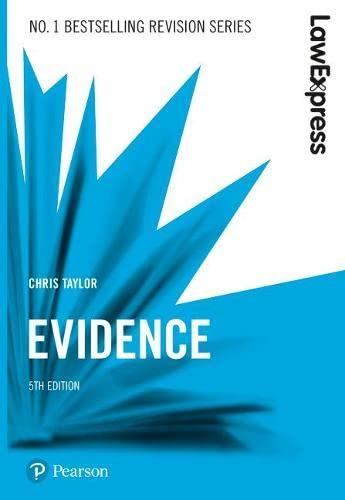Question
How to i go through in answering the following questions 1. 'Neither empirical evidence nor theoretical logic offers any justification for the persistence of the
How to i go through in answering the following questions
1. 'Neither empirical evidence nor theoretical logic offers any justification for the persistence of the dominant position of the kinked
demand curve as a model of oligopolistic behaviour.' Discuss this
statement, and consider whether alternative models of oligopoly
represent any advance on the kinked demand model.
2. Assess the view that privatisation can have little impact on the
behaviour of previously nationalised industries, since a state monopoly is simply replaced by a private one.
3. 'Attempting to learn how to make decisions is an exercise in futility.
All the most important decisions are made by people with little time
and even less information, acting on instinct.' Discuss.
4. Critically assess the relevance of the 'as if' principle used to justify the
reliance on profit maximisation as the working objective of the
modern business corporation.
340 Managerial Economics
5. (a) Evaluate the operational utility of demand elasticity estimates,
and outline any interpretational difficulties in the use of such
estimates.
(b) The annual demand function for a particular motor car is
estimated as:
D = 16000-10P/3+ Y2/1000
where D =annual demand, P =price in 's and Y =average
disposable income.
(i) Given that the retail price next year will be 12 000, whilst
average disposable income is expected to be 8000, estimate next year's annual demand. If the manufacturer
receives 80% of the retail price for each car sold, estimate
the manufacturer's revenue next year.
(ii) Find the retail price to maximise manufacturer's revenue
next year.
(iii) If the marginal cost per car is estimated to be 6000, find
the price to maximise profit next year.
(iv) In the subsequent year the retail price is expected to rise to
13 000, whilst incomes should increase by 5%. Estimate
demand and manufacturer's revenue for that year, and use
this information to estimate the price and income demand
elasticities.
6. 'There is a simple relationship between advertising and profitability:
the most profitable firms are the ones that advertise most. Therefore
advertising must increase profitability.' Discuss.
7. Critically examine the proposition that as the contemplated future
volume of output increases, the expected unit cost of output declines.
8. Recommend a price and marketing strategy for the established
automobile manufacturer seeking to enter the market for specialist
competition motorcycles. Compare your recommendations to those
for the automobile firm seeking to enter the volume small car market.
9. An engineering firm about to undertake a production run of 2000
items must decide whether to overhaul the production machinery.
Because the machinery is quite old, the cost of an overhaul is
uncertain. However, after the overhaul the failure rate for the
machinery is certain to be 0.01. Without the overhaul, the machinery
has a failure rate with the probability distribution given below. Each
defective item costs the firm 6 in hand finishing.
Failure rate Probability
0.01 0.5
0.02 0.2
0.03 0.1
0.04 0.1
0.05 0.1
Examination questions and answer notes 341
(a) Find the expected cost of overhaul that would make the riskneutral decision-maker indifferent between overhauling or not.
(b) The decision-maker decides to seek further information. Contact
with the machinery supplier suggests an overhaul is equally likely
to cost either 175 or 225, depending on the problems encountered. Moreover a sample run of 10 items is produced, resulting
in 2 defectives. Use this new information to re-assess the
overhauling decision.
(c) How would the decision be influenced by:
(i) the firm's precarious financial position;
(ii) the knowledge that the machinery is to be scrapped after
the next production run.
10. 'Opportunity cost is both subjective and speculative. As such the
concept of opportunity cost has no place in the scientific decisionmaking process.' Discuss.
11. (a) Briefly explain the significance of the firm's cost of capital. What
are the factors determining that cost of capital, and how can that
cost be estimated?
(b) Given that debt finance is generally cheaper than equity finance,
explain why the firm is unlikely to use solely debt finance to fund
expansion.
(c) A commodity broker is contemplating the acquisition of a new
computer-driven management information system (MIS). The
hardware for this would cost an initial 4 million, whilst software
and staff training would cost 1 million for each of the first two
years operation, and 200 000 per year thereafter. After six
years, the system would be due for replacement. However
scrapping the current (manual) system would save staff costs of
1.5 million each year.
To finance the new investment the broker would use a combination of debt and equity capital in the ratio 1:3. The broker can
borrow at an interest rate of 10%, whilst interest paid can be set
against the corporation tax liability (currently taxed at 30%).
The broker is a listed company with a current share price of
3.00, and current dividend of 15 pence. Over the period the
share price is expected to grow at an annual rate of 6%.
Use the above information to evaluate investment in the new
MIS, finding the net present value and internal rate of return on
that investment.
What other factors should the decision-maker take into account?
Step by Step Solution
There are 3 Steps involved in it
Step: 1

Get Instant Access to Expert-Tailored Solutions
See step-by-step solutions with expert insights and AI powered tools for academic success
Step: 2

Step: 3

Ace Your Homework with AI
Get the answers you need in no time with our AI-driven, step-by-step assistance
Get Started


